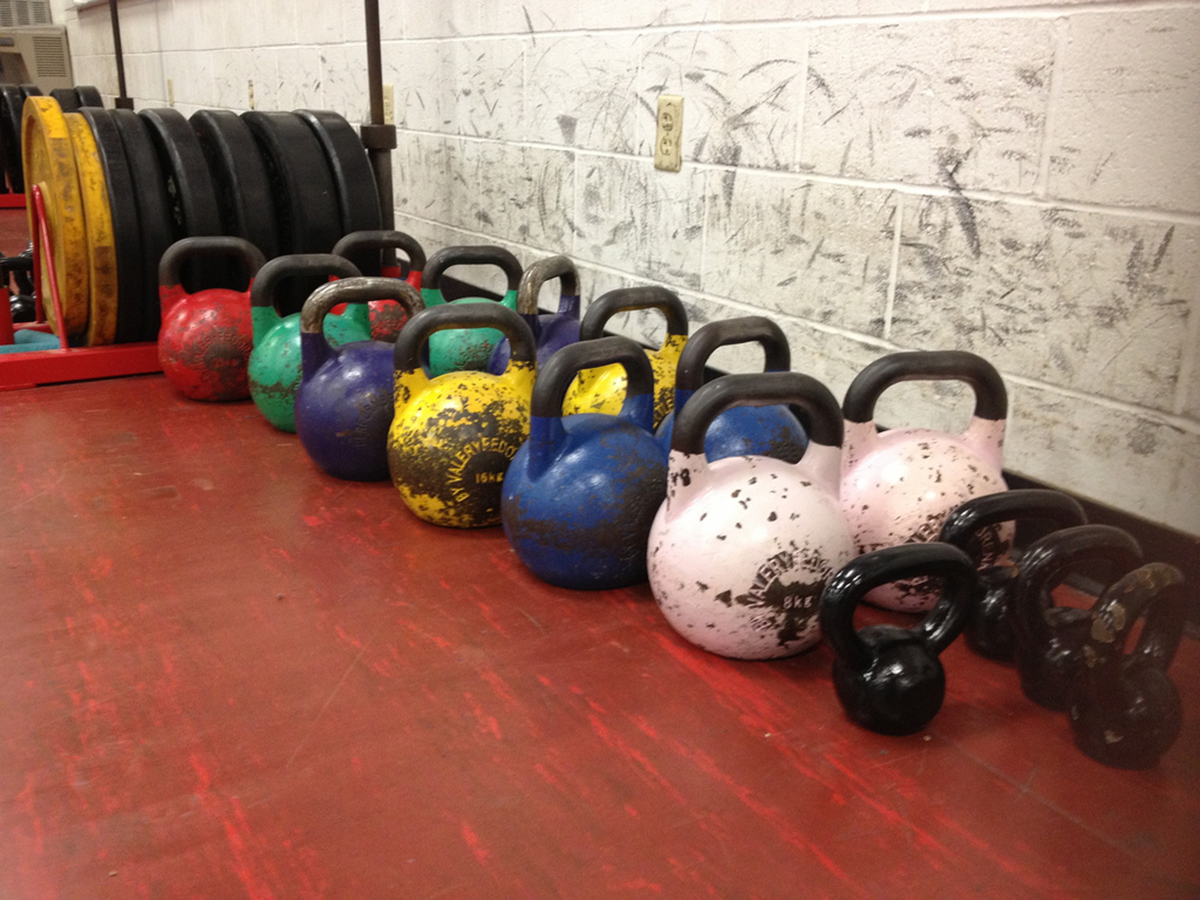Table of Contents
Many busy people who don't have time to go to a gym stay fit by doing kettlebell workouts at home. But the key to success with kettlebells is incremental progression. Unless you happen already to be an elite athletes, don't try to emulate the pros all at once. And start with a light weight.

Easy Does It
Most women can start with a half-pood (17.6 pound/8 kilo) kettlebell, and most men can start with a full-pood (35.2 pound/16 kilo) kettlebell. Absolute beginners using dumbbells would probably start a lot lighter than that, maybe just 2 to 10 pounds (1 to 5 kilos), but using a kettlebell incorporates inertia that using a dumbbell does not. And because the center of gravity of the kettlebell extends beyond the body, it is possible to use kettlebells in ways that incorporate strength training, flexibility, and aerobics all in the same exercise.
Get Into the Swing of Kettlebells
It is a good idea to start with just one or two very basic kettlebell exercises. The beginner's favorite is the swing, in which the kettlebell is place between the legs and then swung up and forward and down and back.
Don't Lift with Your Back
When you are swinging a kettlebell, don't lift with your back. You don't want to stress any single muscle in your core. You want to strengthen them all equally. Keep your back straight when you lift the bell. If you can't do this, you need to start with a lighter bell and build up over a period of weeks.ÂÂ
Developing Kettlebell Power
Once you are comfortable doing at least one exercise on a regular basis, then it's time to move on to others. There are literally hundreds of exercises you can learn from from a certified kettlebell training or by watching a DVD. Every workout can be different, and the feel can be more than a little like dancing.
Read More: Split Swings: Build Balanced Glutes and Hips With This Tweak of a Classic
Kettlebells For Getting Back into Shape After Injury
Exercise and rehabilitation professionals have used kettlebells in recovery programs even for injuries to the lower back and rotator cuff. These applications usually require the very lightest kettlebells made, weighing as little as 3 pounds (about 1.5 kilos). Even these tiny weights would not be used while an injury is still causing inflammation, swelling, and pain. After acute pain stops, the lightest kettlebells are used to promote muscle endurance, that is, many repetitions, small load. Exercise with fewer repetitions and heavier load rebuilds muscle after initial improvements.
Kettlebells belong in just about every exercise program. They are inexpensive. They don't take up a lot of space, and they are easy to store. And kettlebell routines build up aerobic capacity at the same time they increase muscle strength and flexibility, more than far more expensive exercise equipment.
- Manocchia P, Spierer DK, Lufkin AK, Minichiello J, Castro J. Transference of kettlebell training to strength, power, and endurance. J Strength Cond Res. 2013 Feb. 27(2):477-84. doi: 10.1519/JSC.0b013e31825770fe.
- McGill SM, Marshall LW. Kettlebell swing, snatch, and bottoms-up carry: back and hip muscle activation, motion, and low back loads.J Strength Cond Res. 2012 Jan. 26(1):16-27. doi: 10.1519/JSC.0b013e31823a4063.
- Photo courtesy of Slick-o-bot by Wikimedia Commons : commons.wikimedia.org/wiki/File:USMC-120724-M-3042W-004.jpg
- Photo courtesy of TownePost Network by Flickr : www.flickr.com/photos/atgeist/8282512864/


Your thoughts on this